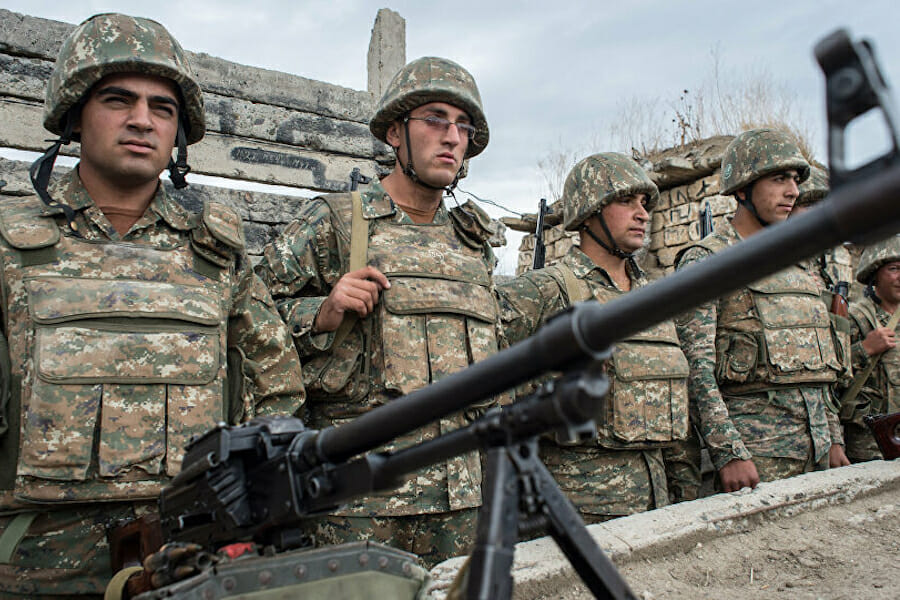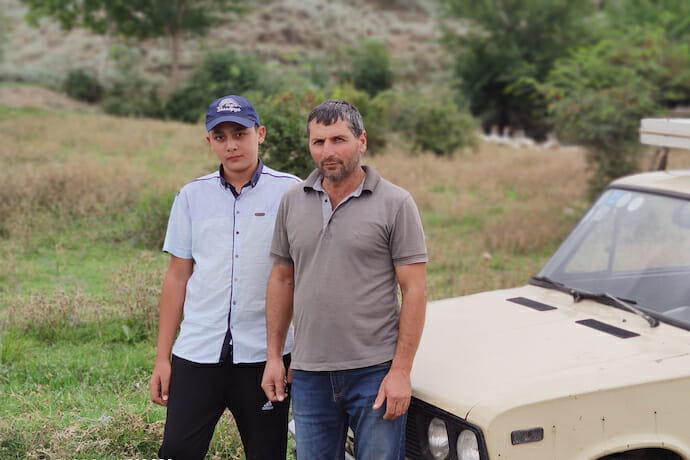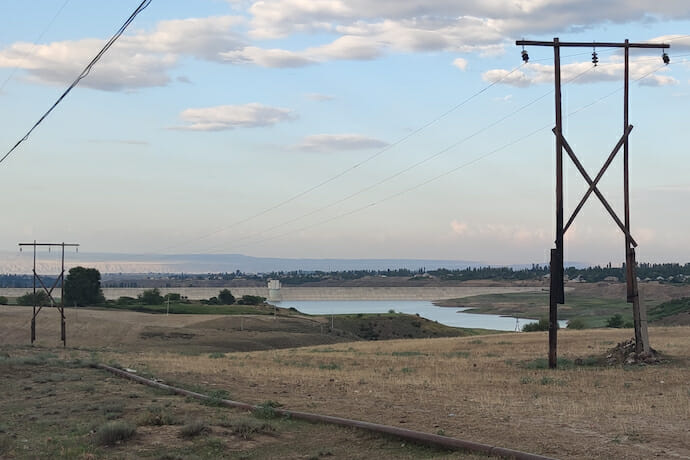
Targeting Civilians Impedes a Peaceful Settlement of the Armenia–Azerbaijan Conflict
Since mid-July, Armenian and Azerbaijani troops have been locked in aggressive posturing along their international border, involving the countries’ artillery installations. Both sides have traded accusations, and blamed one another for instigating the flare-up. Azerbaijan’s Ministry of Defense reported that Armenian armed units tried to go on the offensive to capture positions belonging to the Azerbaijani military. However, Armenia strongly refutes Azerbaijan’s claim that the tensions were triggered by Armenian troops. International mediators called upon the conflicting sides to work towards de-escalating the situation at the border through existing diplomatic mechanisms.
As a result of the escalation, 12 servicemen on the Azerbaijani side, including one major general and one colonel, were killed. The Armenian side reported the death of five servicemen with a further 36 wounded.
The territorial conflict between Armenia and Azerbaijan dates back to the end of the 1980s before the two engaged in a war from late 1991 to 1994. When the active phase of the conflict (1992–1994) had ceased, Azerbaijan had lost control of 20 percent of its territory, where Armenia’s forces are currently deployed. A fragile peace agreement, achieved in 1994, has been interrupted by periods of flare-up over the occupied territory. As of 2020, the international community supports Azerbaijan’s territorial integrity.
The latest conflict area, Azerbaijan’s Tovuz district, which is located nearly 200 kilometers away from the occupied Nagorno-Karabakh region, is a mountainous but densely populated area. More than 170,000 people live in the Tovuz region, as well as more than 120,000 in the Tavush region of Armenia.

To see the consequences of the recent escalation on the ground, I visited Tovuz district, where I grew up and lived until the age of 17. I recall that the elders of the region used to recount stories of their daily lives, indicative of a positive and reciprocal relationship between the Armenians and Azerbaijanis, including how they went to the Yerevan market to barter Tovuz potatoes for Armenian apricots during the USSR period. Incidentally, a part of our house was built by Armenian craftsmen, which was normal at the time. Armenian builders were famous for their craft. Unfortunately, this relationship did not last long. Territorial claims by a group of Armenians at the end of the 1980s destabilized both nations. (It is worth mentioning these positive examples of mutual respect as they demonstrate that the two peoples can live peacefully together, as they have in the past.)
The last escalation was not limited to military losses. The armed forces of the Republic of Armenia purposefully fired at settlements housing civilians in the direction of the Tovuz region using large-caliber weapons and heavy artillery. Aziz Azizov, a 76-year-old civilian in the village of Agdam in the Tovuz region of Azerbaijan died as a result of an artillery strike by Armenian armed forces. According to preliminary estimates, 35 houses belonging to the civilian population in the six villages of Tovuz region – Agdam, Alibeyli, Dondar Guschu, Vahidli, Yukhari Oysuzlu, and Ashagi Oysuzlu – were damaged to varying degrees.
Shelling from the Armenian armed forces has not only inflicted serious damage on residential buildings and households, but also on state property, mainly gas pipelines, power lines, and social infrastructure. President Ilham Aliyev signed an order “to eliminate the damage caused to civilians, state property, including infrastructure facilities in the villages of Tovuz region of the Republic of Azerbaijan as a result of intensive shelling by the Armenian armed forces.” According to this order, one billion Azerbaijani manats were allocated for repairing the damage caused by Armenia’s shelling of Tovuz.
Armenian civilians also suffered as a result of their provocation. The Investigative Committee of the Republic of Armenia reported that 24 houses, a brandy factory and winery, a kindergarten, a cemetery, four cars, a water pipeline, gas pipeline, greenhouse, and one police checkpoint were damaged. One civilian was also injured.
Residents of both Agdam and Dondar Guschu villages reported nocturnal shoot-outs. Hagigat Mammadova, a representative of the head of the Executive Power of Tovuz region in the administrative-territorial district of Aghdam village, said that several houses were damaged.

According to Samir Huseynov, the executive representative of Dondar Gushchu village, two houses were completely destroyed. However, he has stated that the situation in the village is currently stable. Hazi Veliev, a resident of the village, said, “two shells hit the house, but fortunately no one was home. I had to take the children to a safe place.” He added that his brother was killed during the Nagorno-Karabakh War.
Tariyel Məmmədov, an engineer in the Architecture and Construction Department of Tovuz district stated: “After the Armenians repeatedly threatened to blow up the Mingachevir Dam, we were prevented from using the Tovuzchay Reservoir to its full capacity to ensure the safety of the local population from floods.”
Tovuzchay Reservoir, designed back in Soviet times, but not fully utilized, is of particular importance for the development of agriculture and the sustainable use of water resources. The total capacity of the Tovuzchay Reservoir is about 20 million cubic meters of water. When the reservoir is full, it can contribute to the irrigation of an area of 20 hectares. It serves to improve thousands of people’s living standards by ensuring their food security.
This is not the first time that Armenia has attacked the civilian settlements of the Tovuz district. In 2016, 12-year-old Narmin Khanbabayeva and her 8-year-old brother, Tuncay, were seriously injured in Alibeyli village of Tovuz as a result of the Armenian armed forces opening fire. Another example is the injury of 13-year-old Ramin Yusifov, a resident of Garalar village of Tovuz district, who was shot while bringing in grass on horseback as a result of another ceasefire violation by the Armenian armed forces in August 2017.
These incidents reveal that the deliberate and targeted attacks by the Armenian armed forces on the civilian population along the frontline are of systematic nature. Through such actions, Armenia grossly violates international law, including the Geneva Conventions of 1949 and their additional protocols. However, the OSCE Minsk Group, co-chaired by France, the Russian Federation, and the United States, which mediates this conflict, usually turns a blind eye to such unconstructive actions of Armenia and pays lip service to its readiness to act as the guarantor of a final settlement should Armenia and Azerbaijan find mutually acceptable compromises on their own. Preparing populations for peace is a fundamental prerequisite for any conflict resolution process; however, the latest events on the Armenia–Azerbaijan border have clearly demonstrated that Armenia, instead of preparing its population for peace, has opted to further aggravate the situation
It can be stated that this stance originated in March 2019, when Armenia’s Defense Minister David Tonoyan made a statement that called for “a new war for new territories.” Many experts emphasized that such a statement clearly demonstrated that the Armenian leadership constantly ramps up aggressive rhetoric and actions that impede the negotiation process. Pashinyan’s recent visit to Nagorno-Karabakh and participation in a special awards ceremony for the soldiers of Armenia’s armed forces who fought in July is proof that Yerevan does not intend to commit to holding constructive peace talks.
It has been over three decades since the Armenia–Azerbaijan conflict first broke out, and peace negotiations have yet to yield results. After the latest escalation in July, the peace process became deadlocked at a point of no return. Without a serious evaluation of the reasons for and ramifications of the current stand-off, it will be difficult for the conflicting parties to resume the negotiation process.

